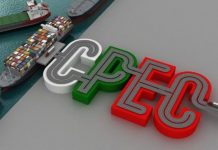Current account is one of the two components of balance of payments, the other being capital account. It comprises of net trade in goods and services, net primary income and net secondary income. Trade in goods and services represents major portion of current account that’s why a deficit in trade balance normally results in deficit in current account. Primary income comprises of compensation of employees, investment income and other primary income. Investment income includes income from direct investment, portfolio investment and other investments. Secondary income largely contains all current transfers between residents and nonresidents. These transfers are broadly categorized into personal transfers, worker’s remittances and other current transfers.
A deficit in the current account occurs when the cumulative outflows from all components of current account exceeds the inflows from the corresponding components. A current account deficit for extended period may results in more debt and exchange rate crises, therefore attainment of sustainable current account balance becomes crucial for overall economic stability and growth. Considering the primary elements of current account, trade balance and remittances plays an important role in sustaining current account balance. Trade balance is of pivotal importance in managing current account deficit because of its proportionate size in current account and government’s ability to influence it. Similarly, a drastic decline in remittances is unlikely to happen in short run, so the prevailing pattern of remittances is expected to continue in long run contributing to sustainability of the current account.
Dr. Noureen Adnan
Policy Head
Financing and Financial Sector Integration, CoE CPEC
Younas Kakar
Senior Research Fellow
Financing and Financial Sector Integration, CoE CPEC

 中文
中文 Urdu
Urdu












